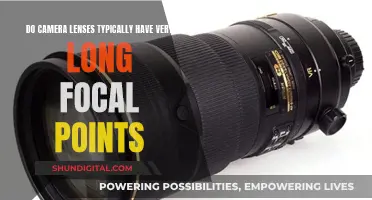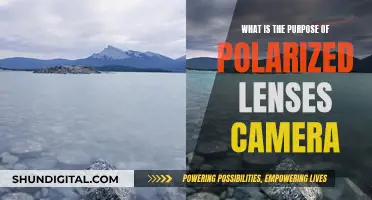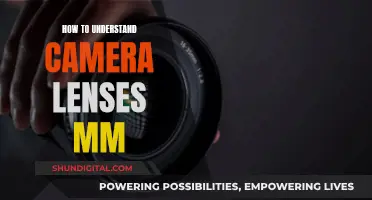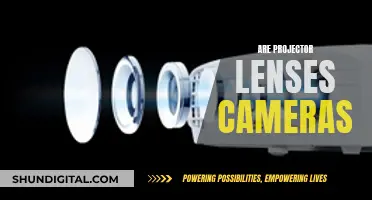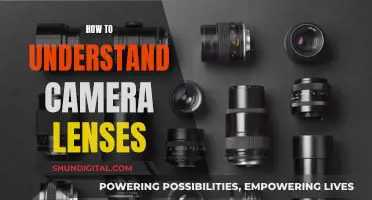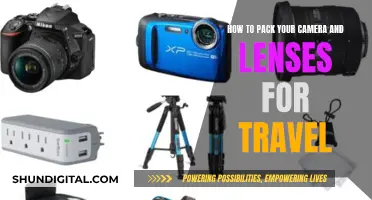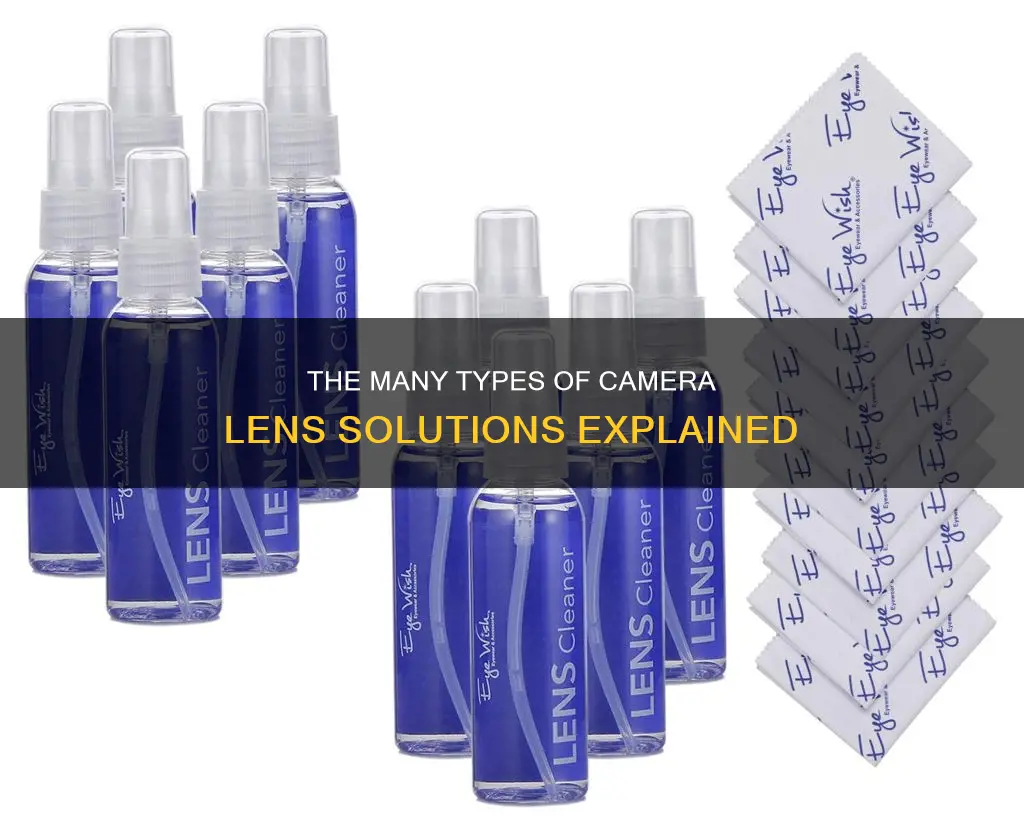
Camera lenses are an essential part of a photographer's kit, arguably more important than the camera body itself. The lens is what focuses light from what you see through the viewfinder into a tiny, typically 35mm spot on the back of your film, DSLR, or mirrorless camera. Without a lens, the only kind of image you can produce is white light.
There are two umbrella categories of lenses: prime and zoom. A prime lens has a fixed focal length and is generally lighter and cheaper. Zoom lenses have variable focal lengths within a particular range and are more versatile, but they tend to be heavier and more expensive.
Within these categories, there are several types of lenses, each with its own unique characteristics and use cases:
- Standard lenses have a mid-range focal length, typically between 40mm and 60mm, and provide a field of view similar to the human eye, making them a popular choice for street, travel, and portrait photographers.
- Telephoto lenses have a longer focal length, typically above 60mm, and are used to magnify distant subjects, making them ideal for sports, wildlife, and event photography.
- Wide-angle lenses have a shorter focal length, typically below 40mm, and allow you to capture more of the scene in front of you, making them popular for landscape, architecture, and real estate photography.
- Macro lenses are designed for close-up photography, with a 1:1 ratio, allowing you to capture tiny details of small subjects.
- Tilt-shift lenses allow you to distort and change the perspective of a shot, making them useful for architectural photography to ensure that buildings don't appear to be leaning.
- Fisheye lenses are ultra-wide-angle lenses with a focal length of less than 14mm, creating a unique, curved perspective, and are often used for visual effects in fine art photography and extreme sports.
Different lenses serve different purposes, and choosing the right lens can elevate your photography to the next level.
| Characteristics | Values |
|---|---|
| Type | Prime or Zoom |
| Focal Length | Variable or fixed |
| Aperture | Variable or fixed |
| Focal Length Range | Ultra-wide-angle (14-24mm), Wide-angle (16-35mm), Standard zoom (24-105mm), Telephoto zoom (70-200mm), Super-telephoto (300mm+) |
| Image Quality | Zoom lenses can be inferior to prime lenses in terms of image quality |
| Convenience | Zoom lenses are more convenient for travel and events |
| Weight | Prime lenses are generally smaller and lighter |
| Cost | Prime lenses are often cheaper for comparable quality |
| Flexibility | Zoom lenses offer more flexibility with their variable focal lengths |
| Usage | Prime lenses are good for portraits, product photography, and low-light conditions; Zoom lenses are good for travel photography and events |
What You'll Learn

Zoom lenses
The convenience of variable focal lengths comes at the cost of some drawbacks. Zoom lenses are more complex, heavier, larger, and more expensive than prime lenses. They also suffer from a loss of image resolution at their maximum aperture, especially at the extremes of their focal length range. This effect is evident in the corners of the image when displayed in a large format or high resolution. The greater the range of focal lengths offered by the zoom lens, the more exaggerated these issues become.
Digital cameras aimed at beginners and intermediate users typically have a built-in zoom lens. Most digital SLR (DSLR) cameras, however, can make use of interchangeable lenses, allowing photographers to use multiple lenses with different capabilities.
Universal Camera Lenses: A Myth or Reality?
You may want to see also

Prime lenses
A prime lens is a fixed focal length lens, meaning it does not allow the user to zoom in or out. Prime lenses are classic and have been around as long as cameras have. They are the opposite of zoom lenses, which are a more recent invention.
The most popular prime lenses include the 24mm, 35mm, 50mm, and 85mm. The 50mm prime lens, also known as the "Nifty Fifty", is considered to be the closest to the human eye and is perfect for portraits. The 35mm prime lens, on the other hand, is usually used by landscape photographers.
Target's Camera Lens Offerings: What You Need to Know
You may want to see also

Telephoto lenses
A telephoto lens is a type of long-focus lens used in photography and cinematography. The physical length of the lens is shorter than its focal length, which is achieved by incorporating a special lens group known as a telephoto group that extends the light path. This results in a shorter overall design compared to a simple lens with the same focal length.
The focal length of telephoto lenses can vary, and they are sometimes categorised into subtypes: short or portrait (85–135 mm), medium (135–300 mm), and super (over 300 mm). Super telephoto lenses are those with a focal length greater than 300mm, and they are often used to capture distant scenes, such as wildlife or landscapes, with great detail.
While telephoto lenses offer the advantage of greater magnification and the ability to capture distant subjects, they also have some drawbacks. They can be heavy and cumbersome, and the large focal range can lead to decision fatigue, making it challenging to choose the right settings for a particular scene. Additionally, at focal lengths beyond 250mm, atmospheric haze and a "mirage" effect can cause images to become blurry, requiring special conditions to capture clear images.
Understanding Camera Lenses: A Beginner's Guide to Photography
You may want to see also

Wide-angle lenses
- Canon EF-S 10-22mm f/3.5-4.5 USM Zoom Lens
- Canon RF 28mm f/2.8 STM Lens
- Nikon NIKKOR Z 26mm f/2.8 Lens
- Sony FE 12-24mm f/2.8 GM Lens for Sony E
- Panasonic Lumix G Leica DG Vario-Summilux 10-25mm F/1.7 Aspherical Lens
- Olympus M. Zuiko Digital ED 7-14mm f2.8 Pro Lens
The Art of Portraiture: Lenses and Their Unique Effects
You may want to see also

Macro lenses
A "true" macro lens can reproduce subjects on the camera's sensor at life-size, resulting in a 1.0x Maximum Magnification (MM) at the lens' Minimum Focus Distance (MFD). This means that the size of the subject on the camera's sensor is identical to its actual size. Some macro lenses even exceed life-sized reproduction, allowing for extreme close-up photography.
The focal length of a macro lens determines the field of view, working distance, and background blur. A longer focal length provides a greater working distance, which is the distance between the lens and the subject. This can be beneficial when photographing skittish subjects like insects, as it allows the photographer to maintain a comfortable distance without disturbing the subject.
Additionally, longer focal lengths produce a more pronounced background blur, which can effectively isolate the subject. However, shorter focal length macro lenses have their advantages as well. They tend to be smaller, lighter, and more affordable, making them a convenient option for casual macro photographers.
Overall, macro lenses are a valuable tool for photographers who want to explore the fascinating world of extreme close-up photography, revealing intricate details that are often invisible to the naked eye.
Building Custom Camera Lenses: A Step-by-Step Guide
You may want to see also
Frequently asked questions
The two main types of camera lenses are zoom and prime. Zoom lenses have variable focal lengths, allowing you to zoom in and out. Prime lenses have a fixed focal length and do not allow zooming.
Standard lenses have a mid-range focal length, typically between 40mm and 60mm, with 50mm being the most common. They provide a similar field of view to the naked eye, making them versatile and suitable for various situations.
Telephoto lenses have a longer focal length, usually above 60mm. They magnify the subject and are useful for photographing distant subjects. They are often used in portrait, wildlife, and sports photography.
Wide-angle lenses have a shorter focal length, typically below 40mm. They allow you to capture more of the scene and are commonly used in landscape, architecture, and group photography.
Macro lenses are designed for close-up photography, offering a 1:1 ratio or life-size magnification. They are often used to capture small details in nature or products. They can also produce sharp and high-contrast images, making them suitable for portrait photography as well.


